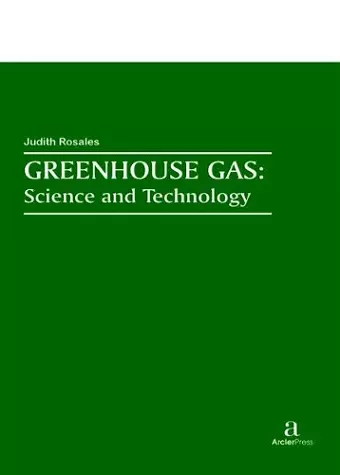Greenhouse Gas
Science and Technology
Format:Hardback
Publisher:Arcler Education Inc
Published:30th Nov '16
Should be back in stock very soon

On Earth, the atmosphere is warmed by absorption of infrared thermal radiation from the underlying surface, absorption of shorter wavelength radiant energy from the sun, and convective heat fluxes from the surface. Greenhouse gases in the atmosphere radiate energy, some of which is directed to the surface and lower atmosphere. The mechanism that produces this difference between the actual surface temperature and the effective temperature is due to the atmosphere and is known as the greenhouse effect. Earth’s natural greenhouse effect is critical to supporting life. Human activities, primarily the burning of fossil fuels and clearing of forests, have intensified the natural greenhouse effect, causing global warming. Greenhouse gases allow direct sunlight (relative shortwave energy) to reach the Earth’s surface unimpeded. As the shortwave energy heats the surface, longer-wave (infrared) energy (heat) is reradiated to the atmosphere. Greenhouse gases absorb this energy, thereby allowing less heat to escape back to space, and `trapping’ it in the lower atmosphere. Many greenhouse gases occur naturally in the atmosphere, such as carbon dioxide, methane, water vapor, and nitrous oxide, while others are synthetic. Those that are man-made include the chlorofluorocarbons (CFCs), hydrofluorocarbons (HFCs) and Perfluorocarbons (PFCs), as well as sulfur hexafluoride (SF6). Atmospheric concentrations of both the natural and man-made gases have been rising over the last few centuries due to the industrial revolution. As the global population has increased and our reliance on fossil fuels (such as coal, oil and natural gas) has been firmly solidified, so emissions of these gases have risen. While gases such as carbon dioxide occur naturally in the atmosphere, through our interference with the carbon cycle (through burning forest lands, or mining and burning coal), we artificially move carbon from solid storage to its gaseous state, thereby increasing atmospheric concentrations. Despite their relative scarcity, the so-called greenhouse gases play an important role in the regulation of the Earth’s energy balance. Greenhouse gases in the atmosphere trap infrared heat energy trying to escape back to space. In doing so they raise the temperature of the lower atmosphere and the Earth’s surface in contact with it. This warming process is called the natural greenhouse effect, but during the last 200 years, mankind’s pollution of the atmosphere with extra greenhouse gases has enhanced this natural...
ISBN: 9781680946253
Dimensions: unknown
Weight: unknown
286 pages